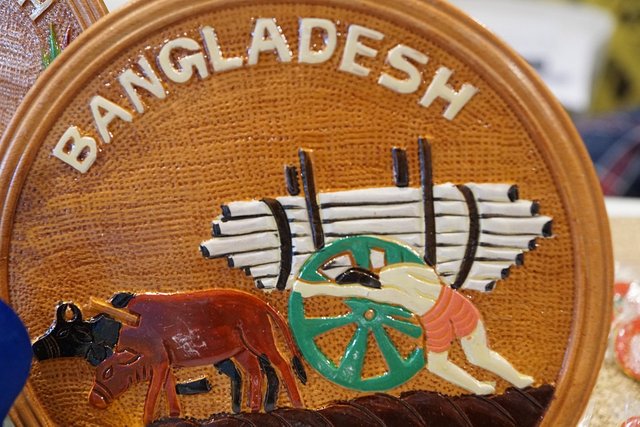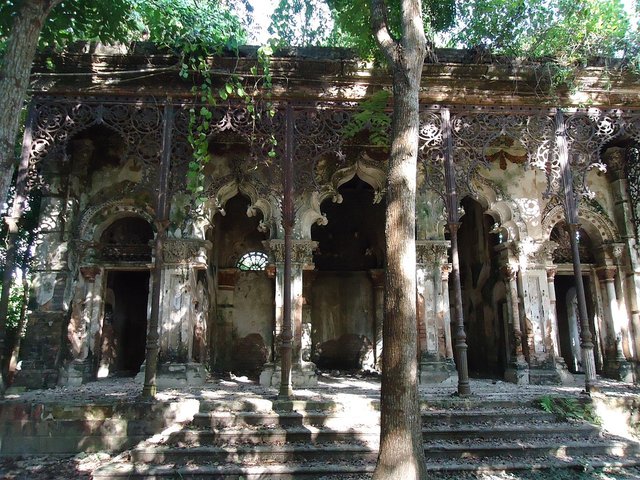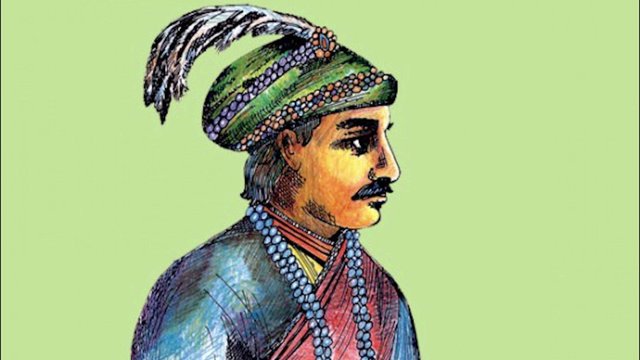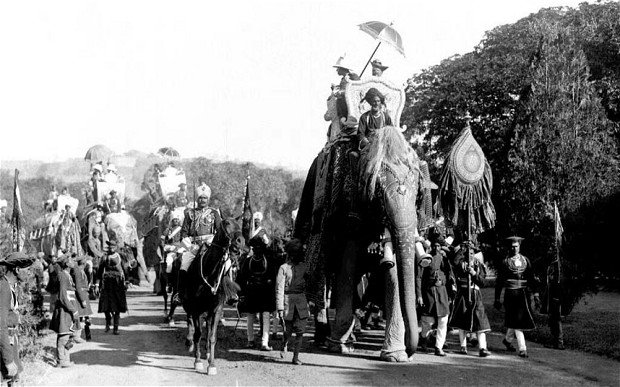Bangladesh is a country. Part-3 (i)
Historical Setting- (i).
BANGLADESH, FORMERLY THE East Wing of Pakistan, rose as an autonomous country in December 1971. The shout on the event—"Joi Bangla! Joi Bangla!" (Victory to Bengal! Triumph to Bengal!) was a group and mournful cry following an especially unpleasant and ridiculous battle for opportunity. These words resounded the social and ethnic demeanor of the new state—to put it plainly, the ethos of the general population—that Bangladesh was to be a socially and phonetically strong unit. Pakistan itself had been made on August 15, 1947, to a great extent the consequence of mutual interests setting Hindus against Muslims. Pakistan was isolated into two wings, isolated by 1,600 kilometers of Indian region, with Islam just a questionable connection between the two wings. Of central significance to East Pakistanis was the Bangla (before 1971 as a rule alluded to as Bengali) dialect and culture, a thought not increased in value by the West Wing of Pakistan until the point when it was past the point of no return.
At the point when Bangladesh joined the network of countries, it was at first perceived by just India and Bhutan. With its delicate and immature financial foundation under outrageous coercion, its lawfulness circumstance tested by various all around outfitted contingents of jobless previous opportunity warriors, its devastated populace disturbed by the unfulfilled guarantee of rising desires, Bangladesh was, in universal circles, given the deplorable mark of "worldwide bundle of nerves."
Bangladeshis cheered at their fulfillment of freedom and offered their praise to the primary national pioneer of Bangladesh, Sheik Mujibur Rahman (Mujib), or the Bangabandhu, the "Darling of Bangladesh." Yet the eventual fate of Bangladesh, imagined by the Bangabandhu and cherished in the 1972 Constitution as patriotism, communism, secularism, and popular government, was as unverifiable and transient as the Bengal rainstorm. In 1975 Mujib, by then ruined for managing a bankrupt and degenerate administration, was killed alongside the greater part of his family. In the following years, various administrations rose and fell in the savage inheritance of Bangladeshi governmental issues. Tyrant and military control has commanded the short history of Bangladesh. In any case, Bengali society is known for its irregular legislative issues, and well known requests for a more open government in Bangladesh, while under control in the late 1980s, proceeded with unabated.

Early History, 1000 B.C.—A.D. 1202.
For a large portion of its history, the region known as Bangladesh was a political backwater—an onlooker as opposed to a member in the immense political and military occasions of the Indian subcontinent (see fig. 1). Students of history trust that Bengal, the zone containing present-day Bangladesh and the Indian province of West Bengal, was settled in around 1000 B.C. by Dravidian-talking people groups who were later known as the Bang. Their country bore different titles that reflected before inborn names, for example, Vanga, Banga, Bangala, Bangal, and Bengal.
The primary awesome indigenous realm to spread over the greater part of presentday India, Pakistan, and Bangladesh was the Mauryan Empire (ca. 320-180 B.C.), whose most well known ruler was Asoka (ca. 273-232 B.C.). Despite the fact that the domain was very much directed and politically incorporated, little is known about any proportional advantages amongst it and eastern Bengal. The western piece of Bengal, be that as it may, accomplished some significance amid the Mauryan time frame since ships cruised from its ports to Sri Lanka and Southeast Asia. Amid the season of the Mauryan Empire, Buddhism came to Bengal, and it was from that point that Asoka's child, Mahinda, conveyed the message of the Enlightened One to Sri Lanka. After the decay of the Mauryan Empire the eastern bit of Bengal turned into the kingdom of Samatata; albeit politically autonomous, it was a tributary condition of the Indian Gupta Empire (A.D. ca. 319-ca. 540).
The third extraordinary realm was the Harsha Empire (A.D. 606-47), which drew Samatata into its approximately managed political structure. The disunity following the destruction of this fleeting domain permitted a Buddhist boss named Gopala to seize control as the principal leader of the Pala Dynasty (A.D. 750-1150). He and his successors gave Bengal stable government, security, and flourishing while at the same time spreading Buddhism all through the state and into neighboring domains. Exchange and impact were broad under Pala administration, as emissaries were sent similar to Tibet and Sumatra.
The Senas, universal and aggressor Hindus, supplanted the Buddhist Palas as leaders of a unified Bengal until the Turkish triumph in 1202. Contradicted to the Brahmanic Hinduism of the Senas with its inflexible standing framework, huge quantities of Bengalis, particularly those from the lower ranks, would later change over to Islam (see Religion, ch. 2).

Islamization of Bengal, 1202—1757.
The Turkish success of the subcontinent was a long, drawnout process covering a few centuries. It started in Afghanistan with the military raids of Mahmud of Ghazni in 1001. By the mid thirteenth century, Bengal tumbled to Turkish armed forces. The last significant Hindu Sena ruler was removed from his capital at Nadia in western Bengal in 1202, albeit lesser Sena rulers held influence for a brief timeframe after in eastern Bengal.
Bengal was approximately connected with the Delhi Sultanate, built up in 1206, and paid a tribute in war elephants keeping in mind the end goal to look after self-rule. In 1341 Bengal wound up autonomous from Delhi, and Dhaka was built up as the seat of the governors of free Bengal. Turks ruled Bengal for a very long while before the victory of Dhaka by powers of the Mughal head Akbar the Great (1556—1605) in 1576. Bengal remained a Mughal territory until the start of the decrease of the Mughal Empire in the eighteenth century.
Under the Mughals, the political reconciliation of Bengal with whatever is left of the subcontinent started, yet Bengal was never genuinely enslaved. It was dependably excessively remote from the focal point of government in Delhi. Since lines of interchanges were poor, neighborhood governors thought that it was not entirely obvious supreme orders and keep up their autonomy. In spite of the fact that Bengal stayed common, it was not confined mentally, and Bengali religious pioneers from the fifteenth century ahead have been compelling all through the subcontinent.
The Mughals in their prime had a significant and enduring impact on Bengal. At the point when Akbar rose the position of authority at Delhi, a street associating Bengal with Delhi was under development and a postal administration was being arranged as a stage toward drawing Bengal into the tasks of the realm. Akbar actualized the present-day Bengali logbook (see Glossary), and his child, Jahangir (1605—27), presented common and military authorities from outside Bengal who got rights to gather charges ashore. The improvement of the zamindar (impose authority and later landowner—see Glossary) class and its later collaboration with the British would have massive financial and social ramifications for twentieth-century Bengal. Bengal was dealt with as the "breadbasket of India" and, as the most extravagant territory in the realm, was depleted of its assets to keep up the Mughal armed force. The Mughals, in any case, did not consume much vitality shielding the field or the capital from Arakanese or Portuguese privateers; in multi year upwards of 40,000 Bengalis were seized by privateers to be sold as slaves, and still the focal government did not mediate. Neighborhood protection from magnificent control constrained the head to designate intense commanders as common governors. However, regardless of the uncertainty of the Mughal administration, Bengal succeeded. Horticulture extended, exchange was energized, and Dhaka wound up one of the focuses of the material exchange South Asia.
In 1704 the provincial capital of Bengal was moved from Dhaka to Murshidabad. Although they continued to pay tribute to the Mughai court, the governors became practically independent rulers after the death in 1707 of Aurangzeb, the last great Mughal emperor. The governors were strong enough to fend off marauding Hindu Marathas from the Bombay area during the eighteenth century. When the Mughal governor Alivardi died in 1756, he left the rule of Bengal to his grandson Siraj ud Daulah, who would lose Bengal to the British the following year.
.jpg)
European Colonization, 1757—1857.
Early Settlements.
The Indian subcontinent had aberrant relations with Europe by both overland troops and oceanic courses, going back to the fifth century B.C. The lucrative flavor exchange with India had been for the most part in the hands of Arab dealers. By the fifteenth century, European merchants had come to trust that the commissions they needed to pay the Arabs were restrictively high and along these lines conveyed armadas looking for new exchange courses to India. The landing of the Europeans in the last quarter of the fifteenth century denoted an extraordinary defining moment ever of subcontinent. The elements of the historical backdrop of the subcontinent came to be molded predominantly by the Europeans' political and exchange relations with India as India was cleared into the vortex of Western power governmental issues. The entry of the Europeans by and large matched with the slow decay of Mughal control, and the subcontinent turned into a field of battle amongst Europeans and the indigenous rulers as well as among the Europeans.
The British East India Company, a privately owned business framed in 1600 amid the rule of Akbar and working under a contract allowed by Queen Elizabeth I, built up a plant on the Hooghly River in western Bengal in 1650 and established the city of Calcutta in 1690. In spite of the fact that the underlying point of the British East India Company was to look for exchange under concessions got from neighborhood Mughal governors, the relentless fall of the Mughal Empire (1526-1858) tempted the organization to take a more straightforward association in the legislative issues and military exercises of the subcontinent. Exploiting the political fracture of South Asia, the British eventually rose to matchless quality through military endeavors, addition, renumeration, and playing one gathering off against another. Beside the prevalent military intensity of the British, their domination was encouraged by the tottering monetary establishments of the nearby rulers, which had been undermined by desolating dynastic wars and the subsequent dislodging of the workers from the land, which was the primary wellspring of state income.
Siraj ud Daulah, legislative head of Bengal, hastily incited a military encounter with the British at Plassey in 1757. He was vanquished by Robert Clive, a gutsy youthful authority of the British East India Company. Clive's triumph was combined in 1764 at the Battle of Buxar on the Ganges, where he crushed the Mughal sovereign. Thus, the British East India Company was allowed the title of diwan (authority of the income) in the regions of Bengal, Bihar, and Orissa, making it the incomparable, yet not main, representing power. Hereafter the British would administer Bengal and from that point stretch out their manage to all of India. By 1815 the matchless quality of the British East India Company was unchallengeable, and by the 1850s British control and impact had stretched out into regions basically the same as those that turned into the autonomous conditions of India and Pakistan in 1947 (see fig. 2).

The British Raj.
Starting amidst the eighteenth century, when the establishments of British administer were adequately laid, the British government indicated expanding enthusiasm for the welfare of the general population of India, wanting to control the ravenousness, rashness, and degenerate exercises of the private British East India Company. Starting in 1773, the British Parliament tried to manage the's organization. By 1784 the organization was made mindful to Parliament for its common and military undertakings and was changed into an instrument of British outside approach.
Some new measures presented in the soul of government mediation plainly did not profit the general population of Bengal. The Permanent Settlement (Landlease Act) of Lord Charles Cornwallis in 1793, which controlled the exercises of the British operators and forced an arrangement of income gathering and landownership, remains as a landmark to the grievous impacts of the great expectations of Parliament. The conventional framework for gathering land charges included the zamindars, who practiced the double capacity of income authorities and nearby officers. The British gave the zamindars the status and privileges of proprietors, displayed chiefly on the British landed upper class and gentry. Under the new framework the income gathering rights were regularly unloaded to the most noteworthy bidders, regardless of whether they had any learning of country conditions or the administrative aptitudes important to enhance agribusiness. Agribusiness turned into a matter of theory among urban lenders, and the customary individual connection between the occupant zamindars and the laborers was broken. Non-attendant landlordship ended up typical, and horticultural improvement stagnated.
Most British subjects who had presented with the British East India Company until the point when the finish of the eighteenth century were content with making benefits and leaving the Indian social organizations immaculate. A developing number of Anglican and Baptist evangelicals in Britain, be that as it may, felt that social establishments ought to be improved. There was likewise the request in Britain, first enunciated by individual from Parliament and political scholar Edmund Burke, that the organization's administration adjust its exploitative practices with worry for the welfare of the Indian individuals. The compelling utilitarian hypotheses of Jeremy Bentham and James Mill expressed that social orders could be improved by legitimate laws. Affected partially by these variables, British executives in India left on a progression of social and authoritative changes that were not generally welcomed by the preservationist components of Bengali society. Accentuation was set on the presentation of Western reasoning, innovation, and establishments as opposed to on the remaking of local organizations. The early endeavors by the British East India Company to empower the utilization of Sanskrit and Persian were relinquished for Western science and writing; basic instruction was educated in the vernacular, yet advanced education in English. The expressed motivation behind mainstream training was to deliver a class of Indians ingrained with British social qualities. Persian was supplanted with English as the official dialect of the legislature. A code of common and criminal strategy was molded after British lawful equations. In the field of social changes, the British stifled what they thought to be unfeeling practices, for example, suttee (self-immolation of dowagers on the burial service fires of their spouses), female child murder, and human forfeit.
English approach saw provinces as providers of crude materials and buyers of produced products. The British success of India corresponded with the Industrial Revolution in Britain, drove by the automation of the material business. Because of the British approach of dumping machine-made products in the subcontinent, India's residential art ventures were altogether demolished, and its exchange and trade crumbled. Eastern Bengal was especially hard hit. Muslin fabric from Dhaka had turned out to be prominent in eighteenth-century Europe until the point that British muslin drove it off the market.

UPVOTE! https://steemit.com/news/@bible.com/6h36cq
I love my country
Me Also